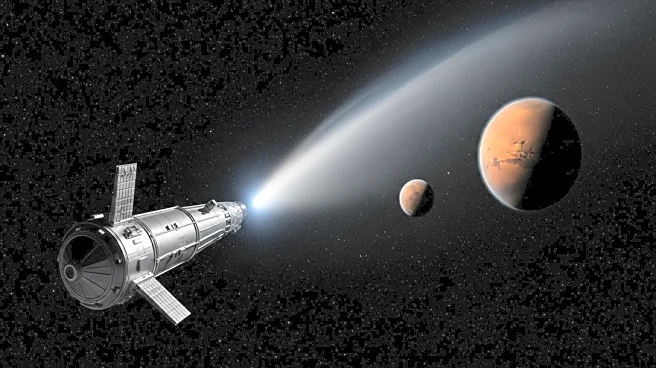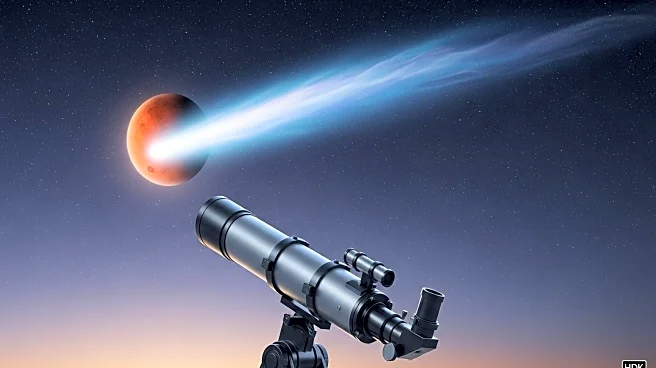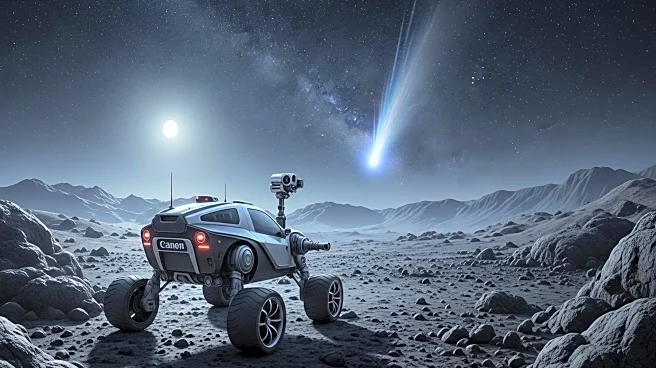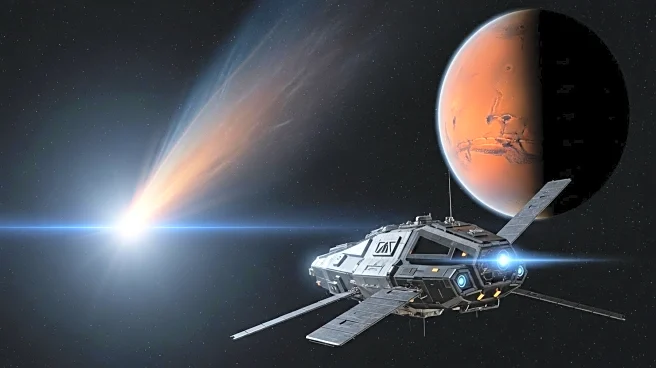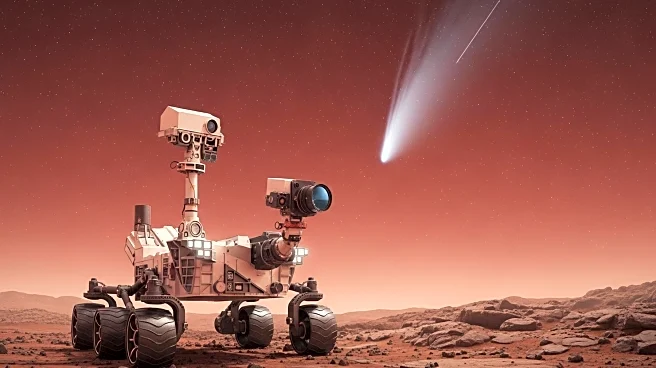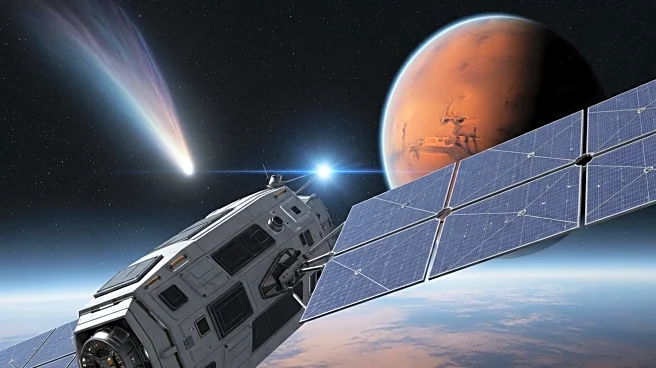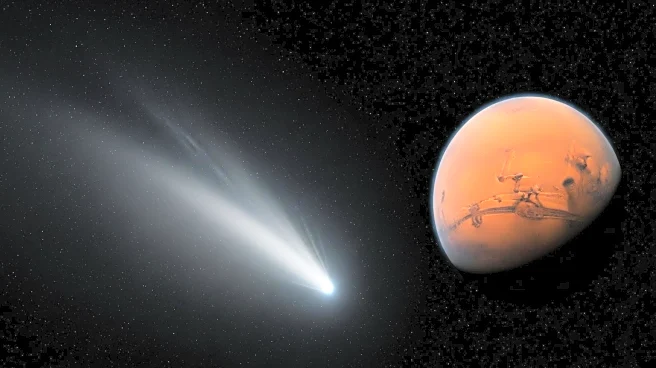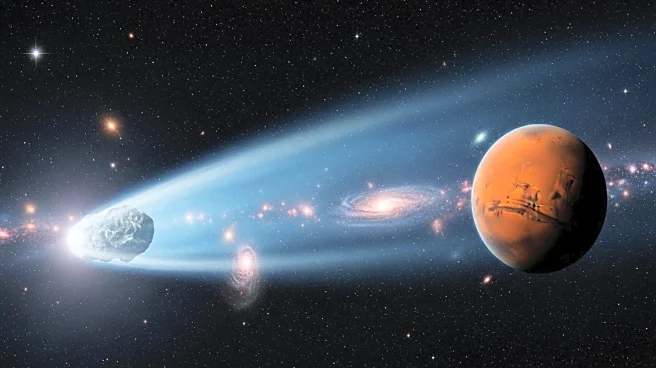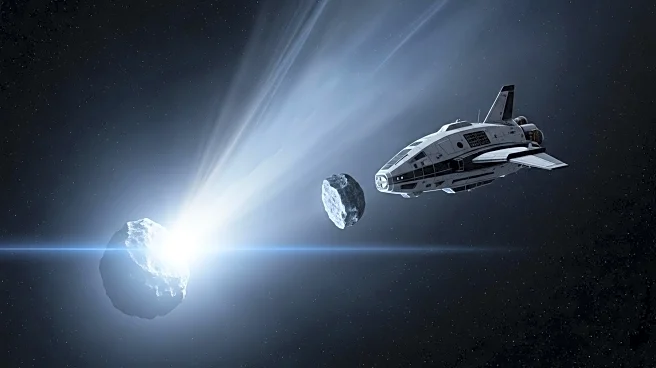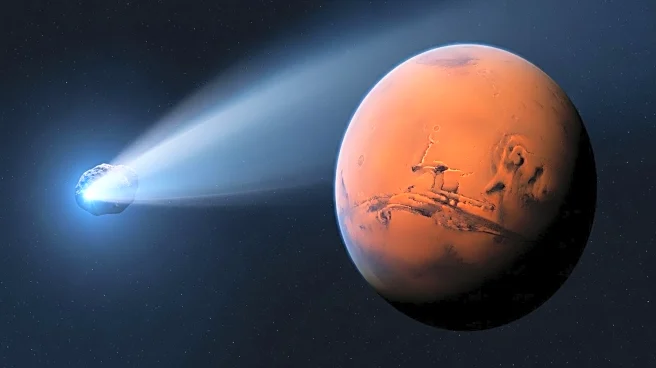What's Happening?
The interstellar comet 3I/ATLAS made its closest approach to Mars, where international spacecraft captured images of the comet. This is the third interstellar object detected in our Solar System, following 1I/'Oumuamua and 2I/Borisov. Observations from the James Webb Space Telescope and the Hubble Space Telescope have helped narrow down the comet's size, although estimates remain imprecise.
Why It's Important?
The study of interstellar objects like 3I/ATLAS provides valuable insights into the composition and behavior of celestial bodies from outside our Solar System. Understanding these objects can enhance our knowledge of planetary formation and the distribution of materials across the universe. The observations could also inform future missions aimed at exploring interstellar space and its phenomena.
What's Next?
As 3I/ATLAS approaches perihelion, further observations are expected to refine estimates of its size and composition. Researchers may use data from Mars probes and space telescopes to study the comet's trajectory and interactions with solar radiation. These findings could contribute to models predicting the behavior of interstellar objects and their impact on planetary systems.
Beyond the Headlines
The detection of interstellar comets challenges existing theories about the formation and evolution of planetary systems. These objects may hold clues to the processes that shaped the early universe and the distribution of life-building materials. The study of 3I/ATLAS could lead to new hypotheses about the origins of comets and their role in cosmic evolution.

